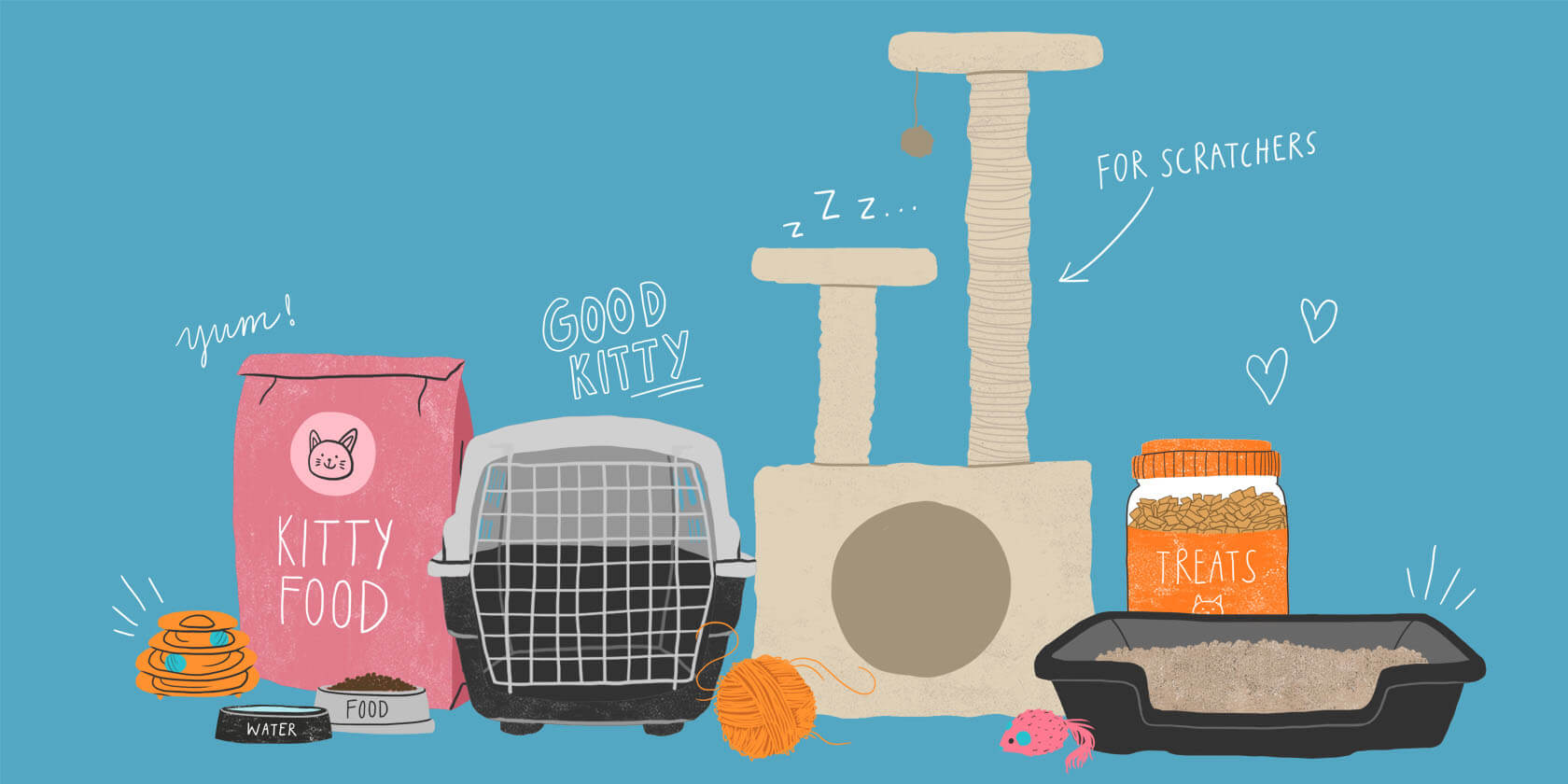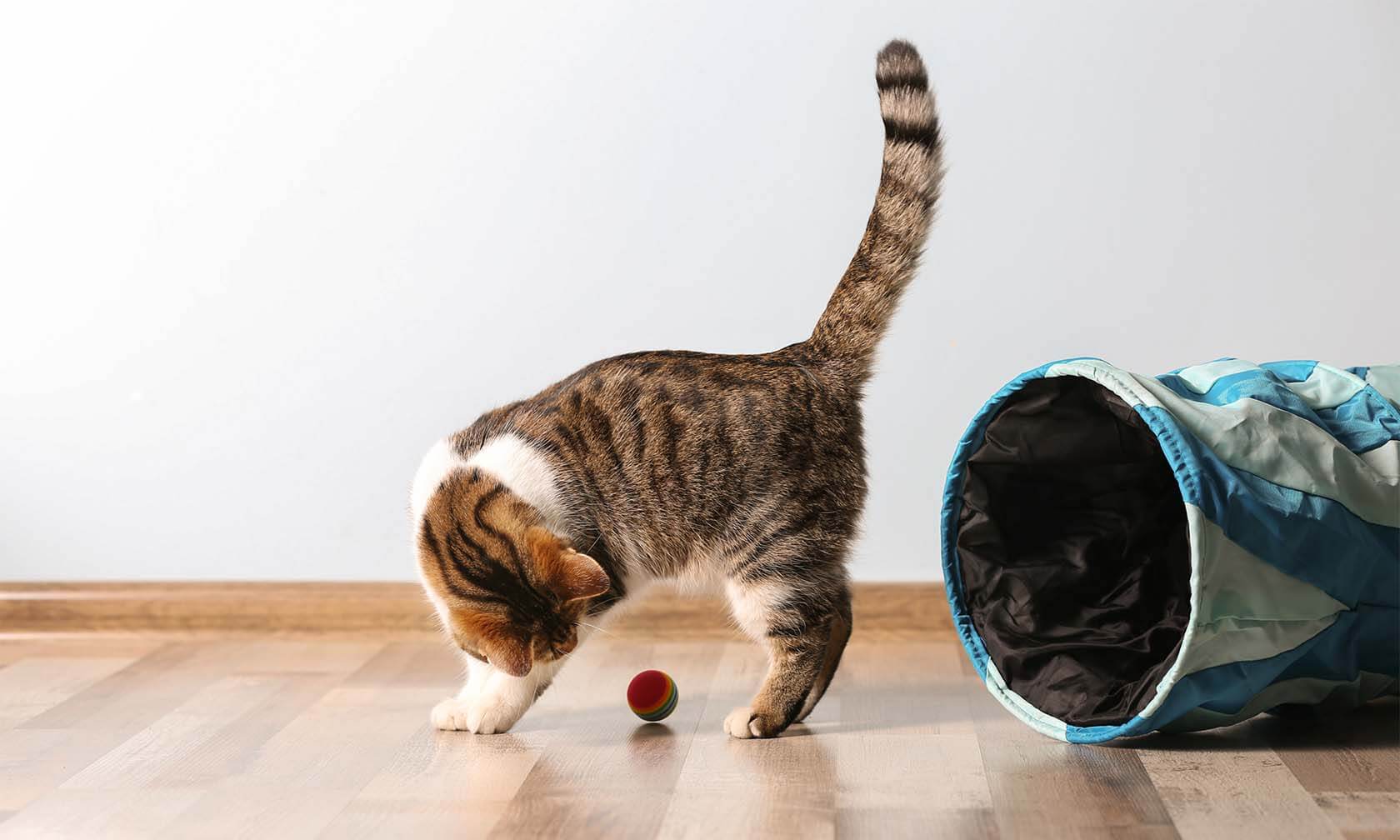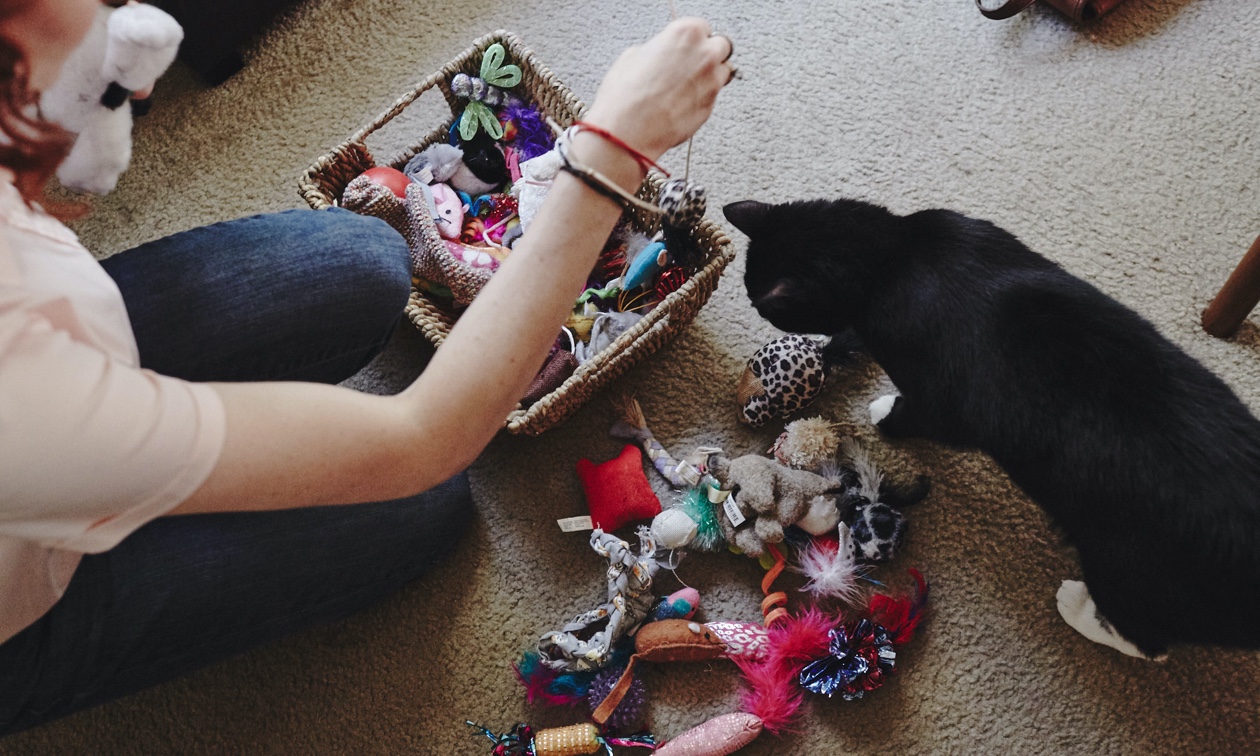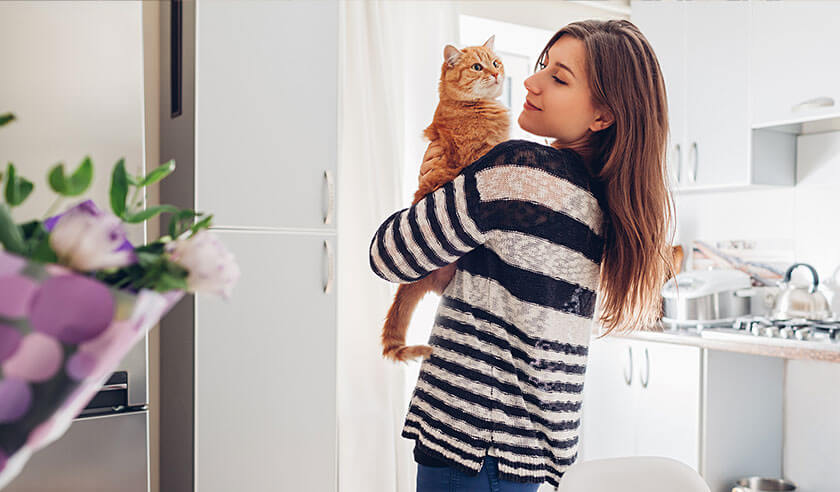There’s a lot to do in preparation for bringing a new cat home, from cat-proofing your space to stocking up on all the essential items. While it can be overwhelming to know what exactly to buy, we’ve put together a list of new cat essentials. Just remember — each cat is different, and it may take some trial and error to find their favorite food, litter, or toy.

Collars and Harnesses
Collars come in all shapes, sizes, and colors, so there’s lots to choose from. Breakaway collars are a good place to start. If you’re planning on taking your cat for walks outdoors, look for a harness as well.
Tags
Having a tag on your cat’s collar is a must, in case they wander off or get lost. Most pet stores offer tag engraving, and there’s plenty you can get online, too.
Include both your phone number and email address on the tag so you can be reached right away if someone finds your cat. Whenever your contact information changes, don’t forget to update the tags, too. While you’re at it, make sure that your cat has a microchip and that their chip is registered with your most up-to-date contact info.
A Litter Box (and Litter)
When it comes to buying litter boxes, the bigger, the better. Aim to purchase one more box than the number of cats you have. While you’re at it, pick up a few different types of litters to test. This will help you figure out which type and brand your cat prefers and will use consistently.
Food and Water Bowls
Stainless bowls are durable and easy to clean. While glass and ceramic are also good picks, avoid plastic bowls, as they can play host to bacteria and even cause chin breakouts (a.k.a. cat acne).
Cat Food
To avoid digestive drama, start with the food your shelter provided for your cat. Then if you want to switch, do it slowly over the course of 1–2 weeks so your cat’s stomach can adjust to their new diet. Your veterinarian can tell you if and when it’s time to switch foods. Canned food helps keep your cat hydrated, which may benefit their kidneys and bladder.
Toys
Balls with bells (and without), catnip critters, plush toys, fish on a string, laser pointers… the list goes on. Try a few different toys to see what your cat goes for. Just check for and avoid dangly bits and strings that can be chewed off and swallowed. You can also keep your cat’s brain busy and sharp with puzzle toys and interactive feeders.
Treats and Training Items
Clicker training is a fun and effective way to train and communicate with your cat. Press the clicker to tell them when they’re doing something good. Then follow the click with a treat to reward them. Together, the clicks and treats will boost your training success while building a stronger bond with your kitty.
In terms of treats, go with mini-sized treats, so your cat doesn’t pig out during your training sessions. Treats shouldn’t be more than 10% of your cat’s total daily caloric intake (and a lot less if they’re already overweight).
Scratching Posts
Scratching posts come in all shapes, sizes, and textures, which is a good thing because cats love variety. Try a couple of styles — including some tall ones and some flat ones — and let your cat dig in!
One scratching post usually isn’t enough. To help save your furniture and carpets from your cat’s busy claws, set up a few scratching posts in different areas of your home. For maximum success, remember to actually introduce the scratching post to your cat and show them how it is used.
Carriers
A carrier that’s too big or too small can stress your cat out. Choose a carrier that’s about one-and-a-half times the size of your cat. In terms of material, plastic is sturdy and easy to clean. Soft carriers are easy to store, but cats have been known to escape out of them. Cardboard is inexpensive, but it can’t be cleaned if your kitty gets carsick.
Lastly, opt for, a carrier that opens from the top. This can mean less of a struggle when putting your cat into the carrier — especially if there’s a treat waiting for them.
ZPC-00530R2





